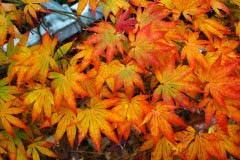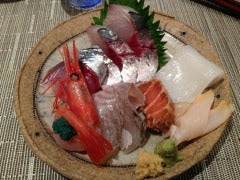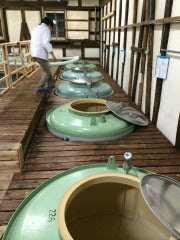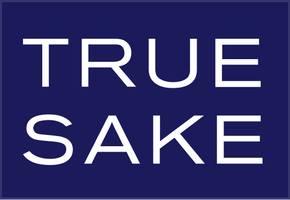Sake Moments – Fall Flavors “Hiyaoroshi” Style

Last year I wrote a pretty cool piece about what Fall sake and food flavors mean to me! It’s worth a peak: Sake Truths – Fall Equals Flavor!
This is truly a sake season!
The number one sake season has to be in the Spring, when producers release their just made nama sakes that are fresh, bright and impactful! Spring nama season is a real treat, because you get to taste so many raw expressions of sake. If Spring is the number one sake season, then the Fall season is a close second! For many Fall released single pasteurized or “Fall draft” sakes are far more structured and “crafted” to pair well with the amazing food selections found in autumn.
I love Hiyaoroshi sake, because it represents a purpose in sake. Brewers make batches of sake in January, then pasteurize them once, and then let them set (relax) for up to 9 months before releasing them. Where Spring released nama sakes are bright, brash, zingy, fresh, and robust, Fall draft Hiyaoroshi sakes (in general) are rich, layered, full-bodied, ricey, and perfectly balanced to accept the cuisine flavors of the season. I like to think of it as warm food! Elegant comfort food that is complex featuring flavors with special dashes of umami, other rich components, and fish with an extra layer of fatty oils. Fall flavors are solid and Fall-released hiyaoroshi sakes are equally solid!

Traditionally, we would only be privy to three or four different Hiyaoroshi each season – usually they were the same, but this year we have far more offerings from a new slew of producers.
Of course fresh released sakes in the spring known as “nama season” is amazing, but there is also a ton of fun to be had by sake brewers who make special batches of sake especially to be released in the fall!
I went back in the archives to 2007! This was the year that Hiyaoroshi sakes really made their presence felt in the US. I wrote the following in the Fall of 2007 in the True Sake Newsletter and it is very applicable today:
What's the point of making sake? To make something that tastes good I suppose. And how do you make sake taste good? Well they don't call it the "industry of 10,000 methods" for nothing. They use tricks of the trade. What are these tricks called? Brewing!
Brewing techniques come in many forms - from adding water to dilute brews to adding distilled alcohol to bring out aromas and complexities, from pasteurizing the brew to not pasteurizing the brew, from filtering out the "lees" to leaving a nice misty appearance, from using quick dying yeast for sweater lighter brews to using long slow burning yeasts for deeper richer sakes, from using traditional kimoto and Yamahai techniques to adding a bit of carbonation, and from storing brews for long periods at below freezing temperatures to releasing sakes without doing anything are all methods to make sake taste good!

This Fall will see the release of a certain style of sakes that are made in an attempt to capture a certain flavor and feel in a brew that differs from "typically" made sake. The style is called Hiyaoroshi and in Japan this represents a sake lovers "Indian Summer." There is a huge fan base for these brews because not only do they taste great (and different) but they also represent the changing of the seasons - which gives cause to have a special brew! Autumn is a highly prized time in Japan and much more so for the sake brewing industry. In a word it means that the brewing rice is ready for harvest! The backbone of the industry comes "on-line."
So how does the sake making industry celebrate the new crop and the changing of the season? By going back in time to the beginning of that season's brewing year! Brewers make Nama "unpasteurized" sake in the winter and release it in the Spring. But they don't release all of this "lively" sake. Most brewers will age a portion of this Nama production for roughly six months. Then in the autumn they will hit it with heat "pasteurize" it once as opposed to the typical two heatings and then bottle and release this style of sake. And therein rests the secret technique for making Hiyaoroshi sake.
But I thought nama sake should be consumed fresh? In a perfect world the answer is yes. You should usually drink a Nama fresh to capture the liveliness and essence of a raw sake. Usually! Then again there are ways to make sake taste "good" using all types of methods. One such method is to make that raw sake work. To make it expand and live a slightly longer life - to almost "reach" a new level of flavor and feel. (I have written in length my keen desire for aging nama sakes - it is a passion and reflects how a consumer can also make a sake taste "good" by trying their own techniques.)
Settling is a powerful tool for making sake. Fresh brews tend to be extremely rough around the edges, and that is why most kura historically would "age" their sakes for about 6 months to a year to round out that edge. Same too with Hiyaoroshi sake, they feel aging that Nama for 6 months softens the edges and smooths out the character of the brew.

Kazu Yamazaki from Japan Prestige Sake International - the only importer of Hiyaoroshi sake - is a big fan of getting Americans to taste the "seasonality" of sake. As he said "Sake has three release seasons - Spring, Summer and Fall" and where the earlier releases tend to be a bit more brisk (raw and edgy) Hiyaoroshi has "Less koji-flavor and has far more harmony." He also goes on to say that sake used to - in general - be aged for at least a year to calm the edginess thus Hiyaoroshi is really closer to historical or throw-back sake. Lastly, Kazu made a great point that Hiyaoroshi-style sake goes far better with the seasonality of Japanese cuisines including those now fatty fish!
I shot off an email to Koichi Saura - owner and operator of Urakasumi brewery in Miyagi Prefecture - and asked him to describe what Hiyaoroshi sake means in Japan and to sake drinkers there. And rather than paraphrasing him I will just add his reply in whole:
- “The meaning of "Hiyaoroshi" is not defined by law. However, in general it is recognized to be the sake which is made in the severe cold period during the winter (usually Feb. or Mar.), bottled without pasteurization and shipped in September. From ancient times, it is said that the taste of sakes which pass over the summer become moderately matured, smooth and rounded balance in September. When the temperature inside Sakagura become almost same with outside temperature. Therefore 6 months storage is not always required but in the end storage period is usually 6 months (Feb. or Mar. to Sept.) Hiyaoroshi Sake is usually pasteurized after fermentation, before storage and not pasteurized at the time of bottling. That way I can enjoy the pleasantly mild and even somewhat fresh flavor, which is maintained because of non-pasteurized process at the time of bottling.The quality of Hiyaoroshi sake is vulnerable because it is not pasteurized at the time of bottling. We have to keep them chilled in shipping and selling, otherwise the quality of Hiyaoroshi sakes may become poor. Marketing Hiyaoroshi sakes has such difficulties however I believe it is worth the challenge. I (and many Japanese sake brewers, I believe) think that Sake is the only alcoholic beverage, which has seasonality in terms of taste and flavor. Hiyaoroshi sake is very good example of that.”
Can we still call this sake a "Nama" as it is pasteurized? The answer rests more in marketing. I sort of like the word "Draft" but this then shines a different light on breweries that only pasteurize their sakes once as common practice. How about "Nama-Light" or "Semi-Nama"? Who prefers Neo-Nama? Whatever you call this style of sake just remember that it is a whole segment of brews based on a common brewing technique and has created a really great market within the market. And so we must tip our hat to Saura-san at Urakasumi for making this style of sake and Japan Prestige (importers) for offering four great Hiyaoroshi brews this Fall. Please see our "New Sake Arrivals" for the reviews of two of these brews and when the second set of two grace our shelves in the second week of October - including Urakasumi's Hiyaoroshi - we will add further reviews.

Ha! Pretty cool to go back in the way-back machine to see how I felt about “Fall Draft” sakes from almost a decade ago! The good news is that we are still here! The better news is that we have Koichi Saura’s Urakasumi Hiyaoroshi in the store waiting for you to taste the season!
